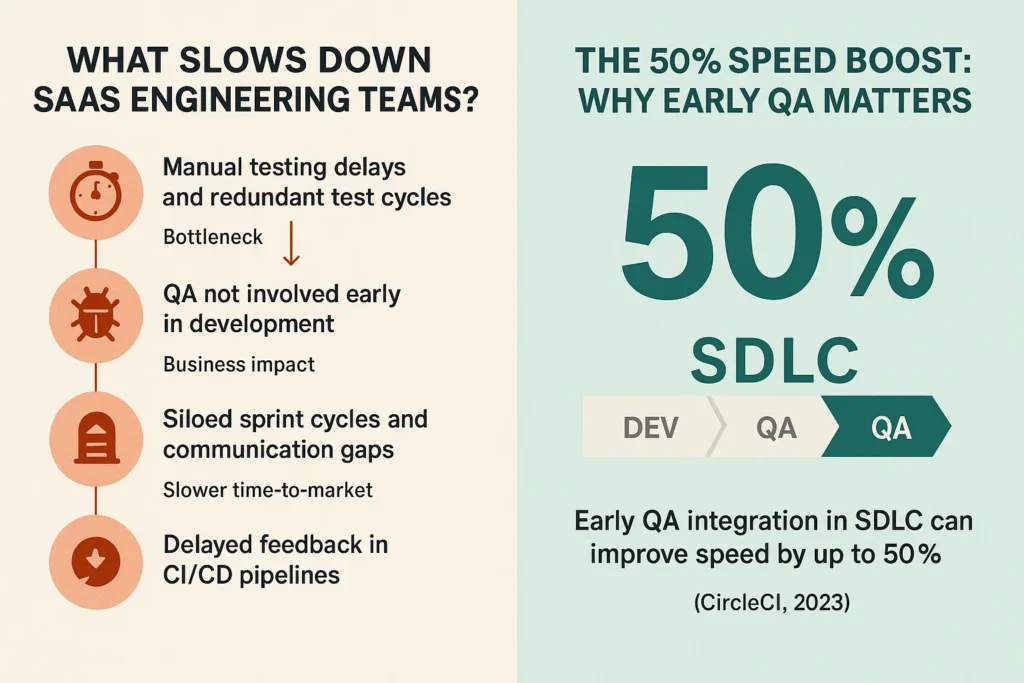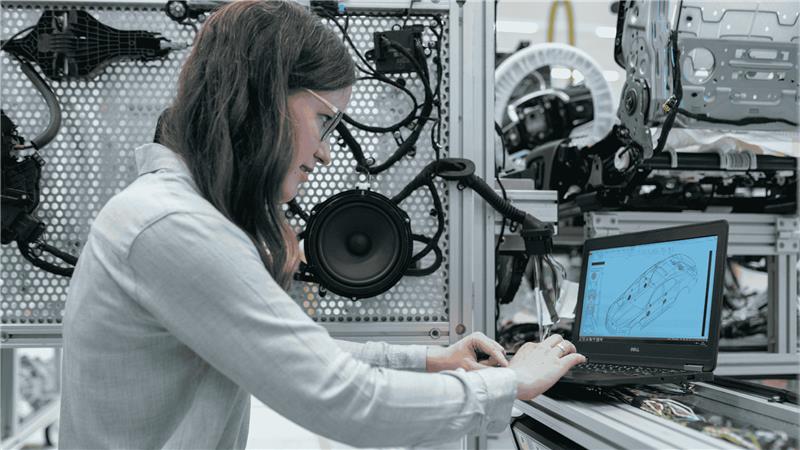
As SaaS companies scale, these inefficiencies can reduce engineering throughput and delay time-to-market. Studies show that integrating QA early in the SDLC can improve speed by up to 50% (CircleCI, 2023).
Unbalanced workloads create long-term burnout

Eastern Europe has become a top choice for offshore QA due to its:
Countries like Ukraine, Poland, and Romania consistently rank high in developer skill indices and English proficiency (Valletta Software, 2024).
Cultural compatibility with Western business practices
Test Automation Tools:
Project Management and Tracking:
CI/CD and DevOps Integration:
Well-integrated tooling ensures real-time feedback, fewer production bugs, and streamlined sprint cycles (ISHIR, 2025).
This workflow reduces cycle time and defects while improving collaboration between teams (Frugal Testing, 2023).
Metric | Description |
Cycle Time | Time from code commit to production |
Deployment Frequency | How often the team delivers working code |
MTTR | Mean Time to Recovery from failures |
Defect Density | Number of bugs per release size |
Automation Coverage | Percentage of tests executed automatically |
Organizations with high test automation maturity demonstrate significantly faster release velocity and improved quality assurance outcomes (Wang et al., 2022).
When hiring offshore QA teams, prioritize skill, security, and sprint alignment over cost alone (The Scimus, 2024).

Including QA during the requirements and design phases ensures better coverage and earlier bug detection. Shift-left testing reduces post-release defects and prevents regression failures.
Combining automated checks (linting, security scans) with QA-led review processes improves test accuracy and reduces high-severity production bugs.
Studies show that outsourced QA with mature CI/CD practices reduces post-release defects by 30% and operational QA cost by up to 40% (The Scimus, 2024).
Offshore QA teams, particularly in Eastern Europe, offer significant advantages in speed, cost, and quality when integrated correctly into your software delivery lifecycle. A combination of:
…can result in up to 35% faster release velocity, fewer production issues, and healthier team dynamics.
Modern SaaS teams must view QA not as an outsourced afterthought, but as a strategic partner in delivering scalable and reliable software.
Join thousands of businesses leveraging offshore staffing to scale their operations globally
Expand effortlessly with My Offshore Employees - access top 1% offshore talent starting at just $3/hr or $600/month per FTE. No hidden fees, no compromises on quality. Your offshore employees work exclusively for you - ensuring focus, transparency, and real-time visibility into your projects. We combine smart automation and proven industry experience to deliver higher productivity, fewer errors, and tailor-made solutions for your business growth.
© 2025. All Rights Reserved.